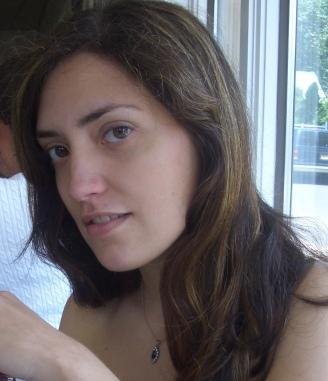A dream is a wish your blog makes
 I've really let this blog go over the last while, haven't I? There are so many great new blogs out there that I haven't had the chance to link to. First off, I wanted to thank everyone who commented on my DOI post; the tips have made thesis-ing go a tad more smoothly. Second, I wanted to let everyone know what I'll be up to next. Soon, I'll no longer be qualified to write from the point of view of a grad student. I've been offered an Assistant Editor position with Chemical and Engineering News. I'm looking forward to getting started, even though the production schedule will mean that the bloggers will scoop me more often than not. :) It's likely that from now on, I'll be posting from meetings, and in another forum. So for now, "She Blinded Me with Science" will be on an indefinite hiatus, while I format margins, apartment hunt in DuPont Circle, and hone my craft at C&EN.*
I've really let this blog go over the last while, haven't I? There are so many great new blogs out there that I haven't had the chance to link to. First off, I wanted to thank everyone who commented on my DOI post; the tips have made thesis-ing go a tad more smoothly. Second, I wanted to let everyone know what I'll be up to next. Soon, I'll no longer be qualified to write from the point of view of a grad student. I've been offered an Assistant Editor position with Chemical and Engineering News. I'm looking forward to getting started, even though the production schedule will mean that the bloggers will scoop me more often than not. :) It's likely that from now on, I'll be posting from meetings, and in another forum. So for now, "She Blinded Me with Science" will be on an indefinite hiatus, while I format margins, apartment hunt in DuPont Circle, and hone my craft at C&EN.* I'll leave you with a deconstruction of one of the more hilarious commercials I've seen lately. Go to this link, then click the "see the Zoom! TV commercial" box, and prepare to be blown away.
I'll leave you with a deconstruction of one of the more hilarious commercials I've seen lately. Go to this link, then click the "see the Zoom! TV commercial" box, and prepare to be blown away.Choice quotes:
"..an advance so profound, it took a team of scientists years to create."
This was noteworthy because apparently, a lot of scientific advances can be sorted out in a fortnight.
"the patented Zoom! light"
Can you really patent light? Can you forbid, say, the use of the 254nm wavelength without paying extensive royalties? My guess is that they've patented whatever lamp generates the UV light at a controlled intensity that's used in the procedure, but feel free to correct me if I'm wrong.
"breaking down the stains' double bonds"
I love how they threw that in there just to be sciencey. Evidently, the radicals generated by the Fenton reaction (which means the gel contains hydrogen peroxide and some kind of iron or other catalyst) are changing the structure of the stains so they no longer appear colored.
aside: I just did some demonstrations yesterday for 8th graders. Among other things, we bleached shredded carrots (aka, got rid of some of the double bonds.)
I'm really just concerned about the fallout for double bonds everywhere. I hope no one starts a smear campaign. (Double bonds aren't all bad, people! Gleevec's got 'em, hey, even Viagra's got 'em.)
Lastly, I know that when I go to the dentist's office, I wear my slinky little black dress. The black dress is, after all, a wardrobe staple.
Thanks for reading, everyone.
* If you do a Google Image Search for C&EN, you will find pictures that appeared in Chembark, Carbon-Based Curiosities, and the Lieber group webpage in the top hits.
Labels: current events



